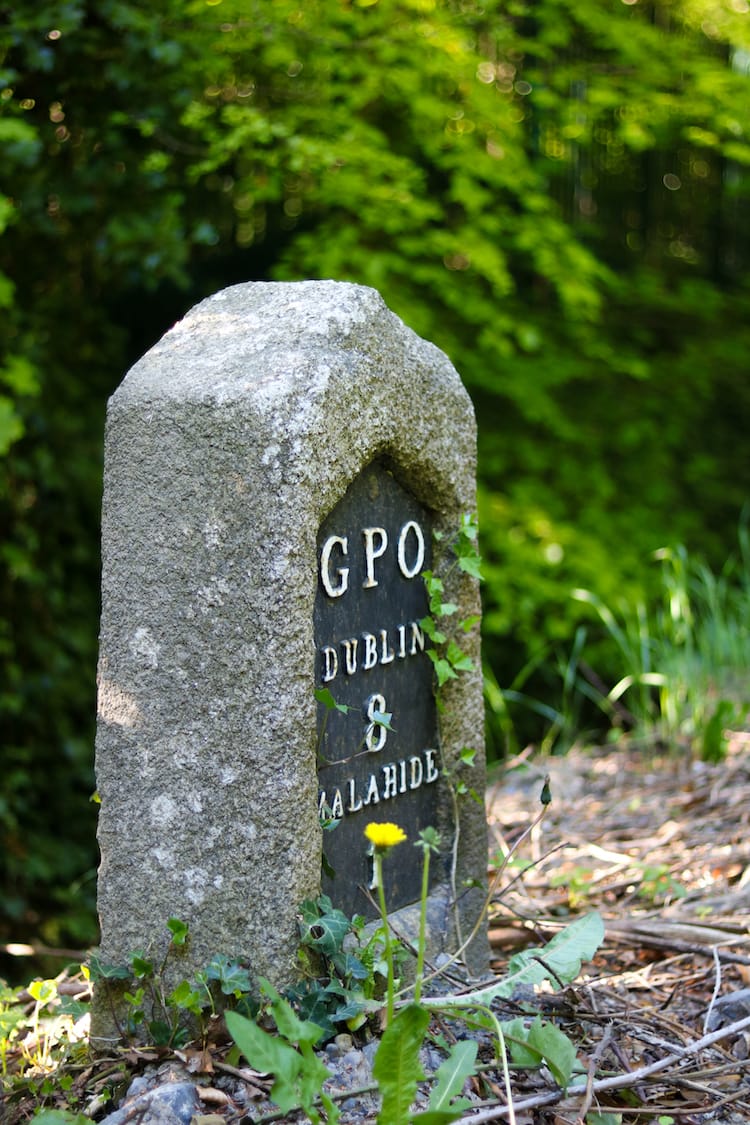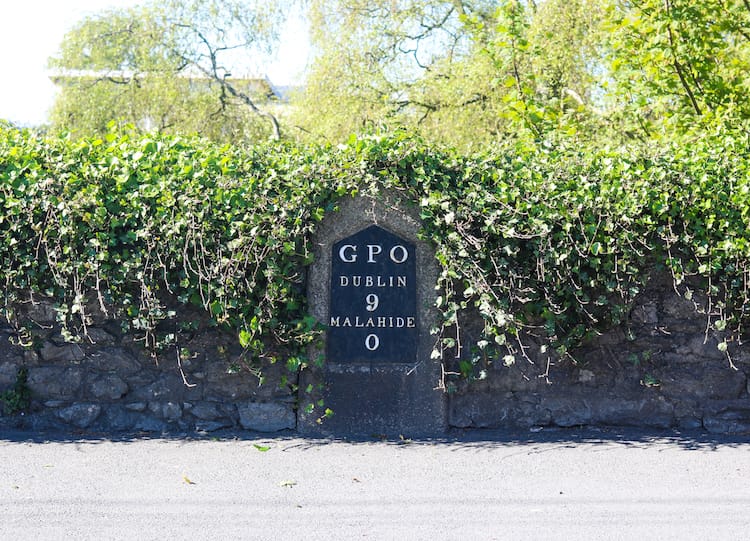What’s the best way to tell area residents about plans for a new asylum shelter nearby?
The government should tell communities directly about plans for new asylum shelters, some activists and politicians say.
You might have noticed the milestones dotted along some of the city’s main roads.

Scattered along the Malahide Road are distinctive stone structures, mostly unacknowledged by passing cars and shrouded from pedestrians. These milestones look forlorn.
The first is just outside the village, and almost fully hidden by hedgerow. Others are further south, near Malahide Castle’s park. They’re surrounded by weeds, next to a narrow, winding road.
Upon each granite slab, an ornate plaque indicates the number of miles to the General Post Office and neighbouring villages. The inscriptions are worn, damaged from years of weathering.
Malahide isn’t the only Dublin location where these relics can be found. Numerous others stand on roads leading out of the county.
These are former turnpike roads, main thoroughfares that once were tolled.
Some who travel these routes today have picked up on these remnants of another era. Others have found their own uses for them.

Ancient Roads
These routes weren’t necessarily well-kept even, if you did have to pay to use them, says Bob Montgomery, the curator at the Royal Irish Automobile Club Archive.
They weren’t paved or tarmacadam or anything like that, he says. “Landowners had an obligation to maintain the roads that passed through their land but a lot of them didn’t bother. Even into the 1910s, very few were steamrolled.”
Vehicles travelling on them were typically horse-drawn, with “an average of about half a dozen steam vehicles passing by over a 50 year period”, he says. Drivers relied on the milestones to stay on track.
Similar slabs once existed on British roads. Theirs date back to Roman times. Montgomery’s research shows that Ireland’s came much later, at the same time as the mail service at the turn of the 19th century.
Under the management of the famous engineer Thomas Telford, early milestones were placed along Ireland’s first national road to make it easier for those in London and Dublin to communicate. Postal vehicles could now travel easily along the sign-posted route, which had cost £20,000 in total.
Telford’s project began at Howth harbour and, on this side of the Irish Sea, stretched as far as the General Post Office – including what’s known today as the Malahide Road. Similar milestones began to crop up all across Dublin, inspired by the Telford set.
The markers were used until the early 20th century. Once the roads improved, though, their importance faded.
That happened when “the first Irish road signposts would have been erected”, making the artefacts unnecessary, says transport historian Michael B. Barry.
Old maps of Dublin show how widespread they used to be. (You can check them out online, or at the South Dublin County Libraries headquarters in Tallaght, says Alyssa O’Leary, who works there.)
From the dozens of milestones marked upon old maps, 33 are still recorded today in the Dublin region, on the four counties’ records of protected structures.
In Fingal, you can see them along the Dublin and Malahide Roads. In South Dublin, they stand along the old Lucan Road, and in Leixlip and Ballyboden.
Dún Laoghaire-Rathdown County Council is responsible for milestones on the Rock Road in Blackrock and at Shanganagh Marble and Stone Centre.
Dublin City Council hosts one on Tyrconnell Road and another on Walkinstown Road, among others. Their uses then and now are an intriguing contrast.
South Dublin County Council Heritage Officer Rosaleen Dwyer says that they were once used to record time in the absence of watches or clocks. “At least they’d know the distance, which was their way of marking time really,” she says.
Nowadays their purpose seems, in a way, to be to resist time. They exist in defiance of metrication, and represent an era gone by.
Each day, schoolchildren, dog walkers and park joggers pass by the milestone that stands at the busy crossroads beside Terenure College and opposite Bushy Park, in south Dublin.
On a recent sunny evening, most locals I spoke to had noticed it, but few had given it much thought. For Marian Brennan, it is just another uninteresting “historical marker” in the area.
To others, it’s an essential part of the local landscape. It’s a “lovely” addition to the area, says Charlie Kelly, who uses it as a fixed point on his own walking route. He would “hate for it to be removed”, he says.
Bryan Butler, who lives directly behind it, says he doesn’t think people often notice it. It only caught his eye after he moved in, he says. It makes him think about what the area would have looked like in the past.
“It was all fields around here and that was tucked in the corner. People had to look out for it but maybe it was a little more noticeable then when there wasn’t walls and buildings around,” he says.
Butler has never seen anybody cleaning or repairing it. But it’s well-preserved, he points out. His neighbours think the previous owners looked after it.
For Butler, the milestone still acts as a marker of distance. He passes another in Rathgar on his cycle to work every day.
For Bernard Walsh, two doors down, the milestone records his progress along the 15 bus route.

Here to Stay
The Templeogue Road milestone and its counterparts are unlikely to be removed anytime soon.
They are on the record of protected structures, the register of items and buildings with historical significance, which are protected by law. This list includes everything from gates and pillars, to ponds and mills.
If you find an old milestone in your driveway, the council will recommend an architect who specialises in traditional building to ensure that no accidental damage is done to it.
Dwyer, the council heritage officer, said she found in a survey that, in fact, there might be more than the ones she found left.
She was hunting for items overlooked by the protected-structures list, things that give people “a reflection of something cosy and local that defines their area”, she said.
Locals came up with ideas, including railings, old iron work, cobblestones, utility covers, postboxes, cast-iron water pumps and old walls.
In Rathcoole, some residents found a granite slab that was damaged past the point of legibility. Another milestone, perhaps?
Dwyer says she thinks small or ambiguous pieces of street furniture should be protected too. They’re “very easily lost in the days of modern development, as people put in new pipes and cables and all of a sudden it’s gone”, she says.
Even today, in the era of Google and postcodes, the milestones have come in unexpectedly handy at times.
When long-time Templeogue resident Dermot Maguire moved in, a surveyor from the building society came by to check it out. He needed to fill in a report about the house.
“He wanted to know our location from Dublin City Centre. I was able to tell him how far we are from the GPO anyway,” says Maguire.
[CORRECTION: This article was updated on 5 June at 23.16. An earlier version suggested there were 14 milestones recorded in the Dublin region. In fact, there are 33 on the records of protected structures for the four local authorities. Apologies for the error.]
Get our latest headlines in one of them, and recommendations for things to do in Dublin in the other.